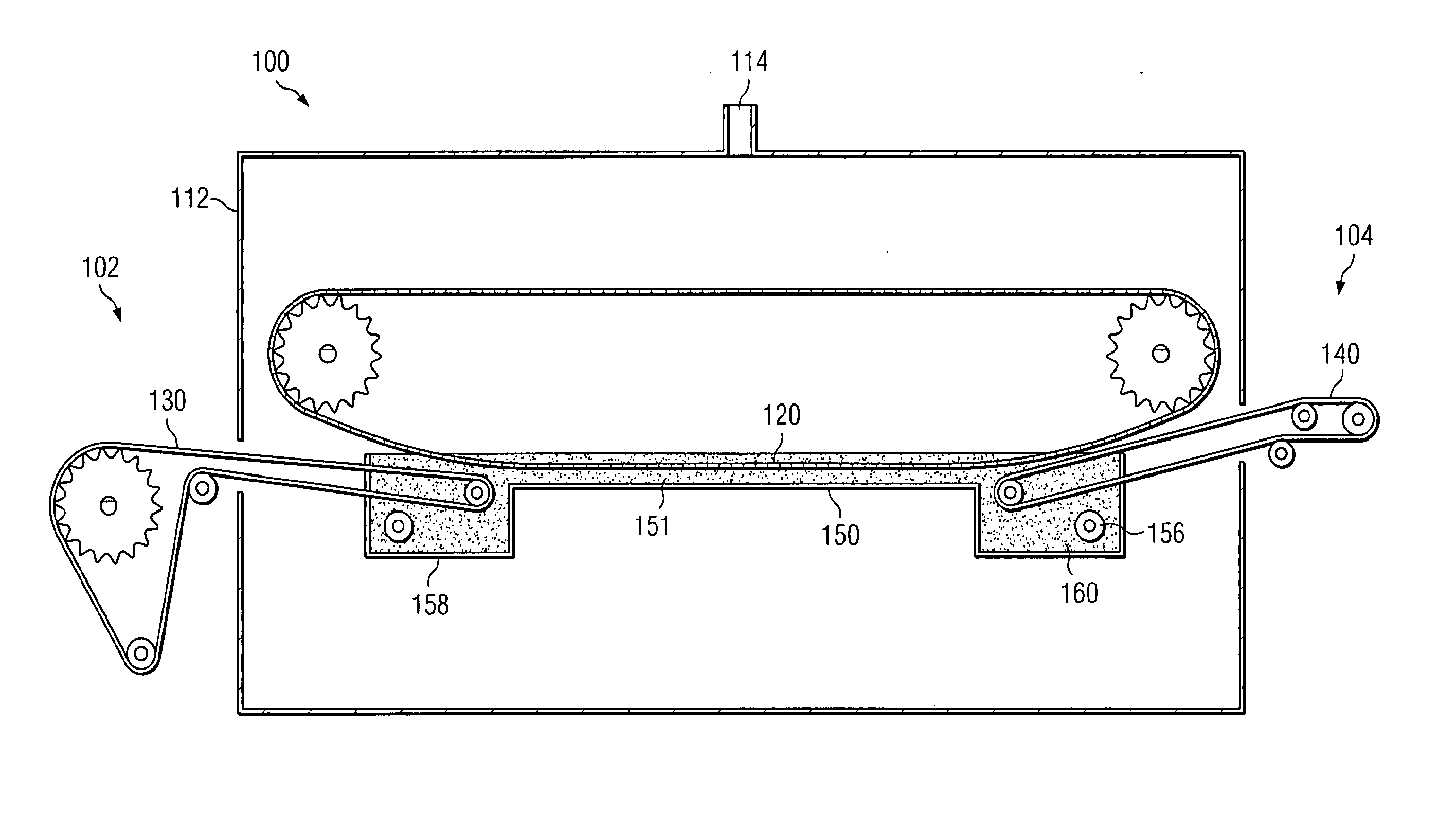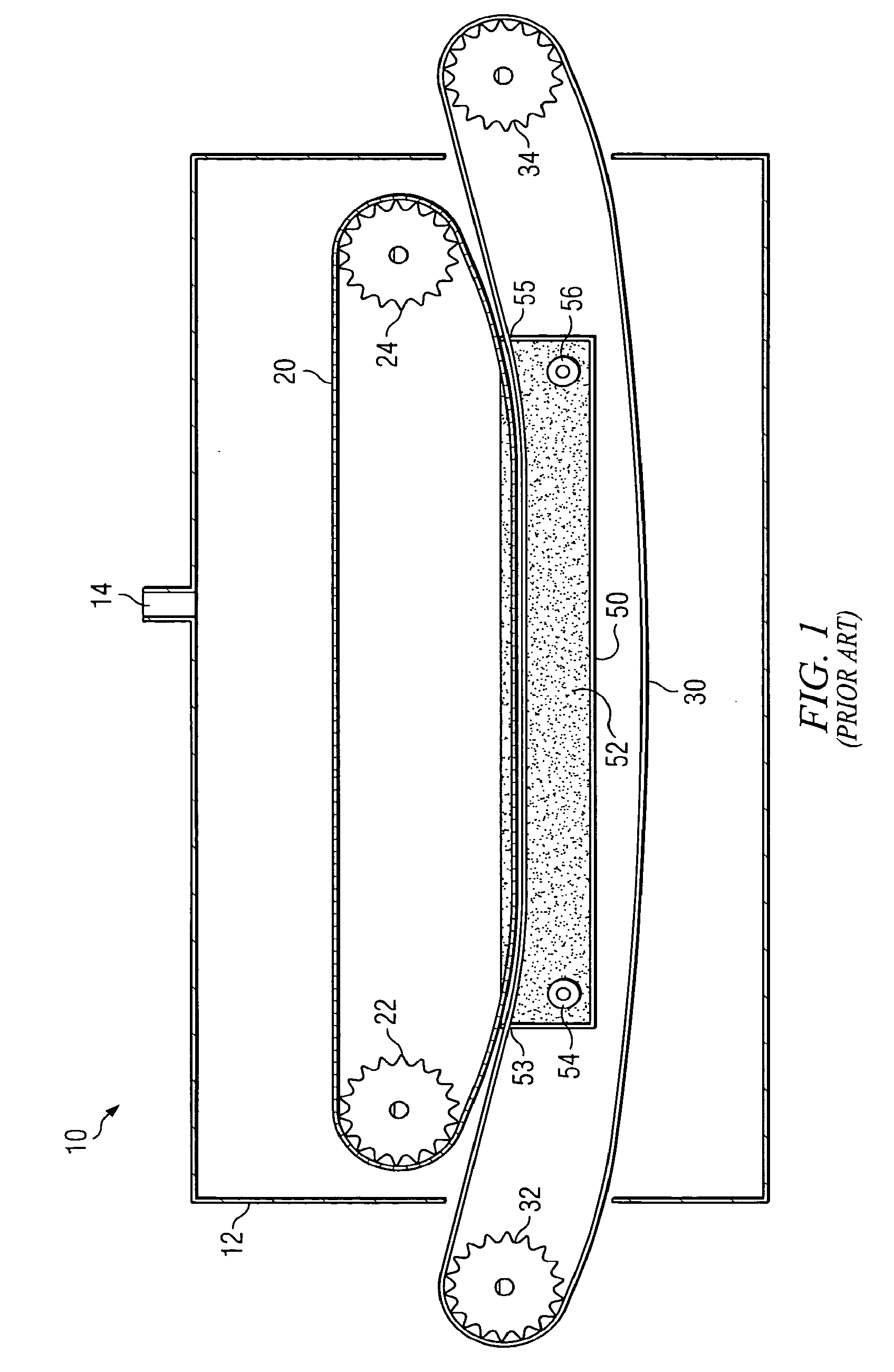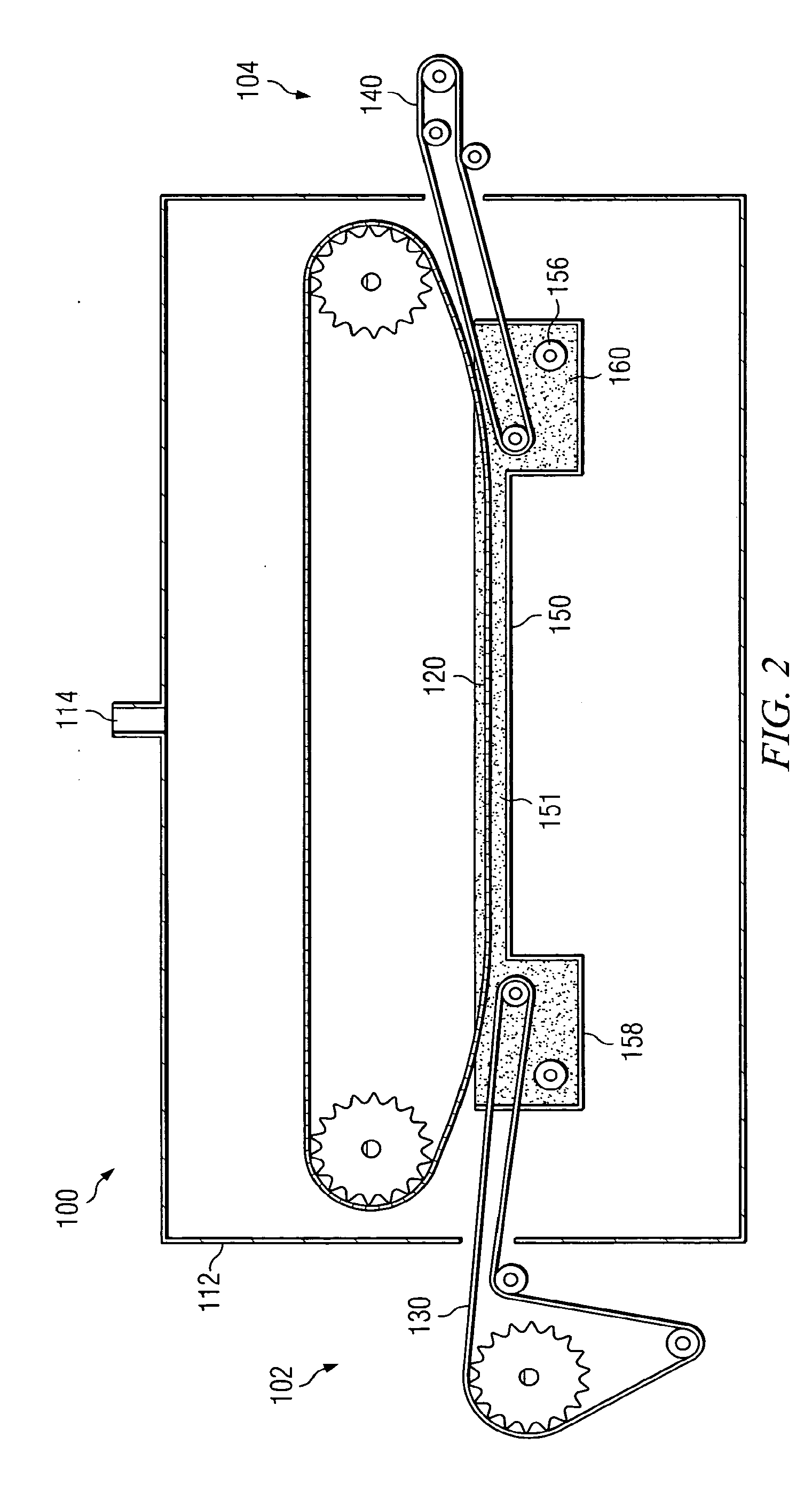Method for Making a Masa Based Dough for Use in a Single Mold Form Fryer
a technology of masa based dough and fryer, which is applied in the field of making dough for a masa based snack food, can solve the problems of frying individual pieces, requiring a significant volume of oil on the dual mold form fryer, and presenting numerous difficulties, so as to increase the uniformity of moisture distribution within the dough and reduce the particle size of the dough. the effect of high shear mixing
- Summary
- Abstract
- Description
- Claims
- Application Information
AI Technical Summary
Benefits of technology
Problems solved by technology
Method used
Image
Examples
Embodiment Construction
[0027] The instant invention provides a method for making a masa-based dough that can be used in the single mold form fryer shown in FIG. 2. FIG. 2 is a schematic cross sectional view of a single mold form fryer. A fryer assembly 100 receives snack products to be fried at an entrance area 102. After cooking, the snack products exit the fryer assembly 100 on an exit conveyer 140 at an exit area 104. Between the entrance area 102 and the exit area 104 is a fryer housing 112 having a port 114 for controlling the fryer environment above the cooking snack products. The top conveyer 120 of the single mold form fryer is disposed longitudinally within the fryer and is positioned above a fryer oil pan 150. Pre-forms are then delivered by a bottom entrance conveyer 130 into oil 151 within the fryer oil pan 150 for cooking. The pre-forms with proper buoyancy then rise up in the oil and dispose themselves against molding surfaces on the top conveyer 120.
[0028]FIG. 3 is a partial cross-sectiona...
PUM
 Login to View More
Login to View More Abstract
Description
Claims
Application Information
 Login to View More
Login to View More - R&D
- Intellectual Property
- Life Sciences
- Materials
- Tech Scout
- Unparalleled Data Quality
- Higher Quality Content
- 60% Fewer Hallucinations
Browse by: Latest US Patents, China's latest patents, Technical Efficacy Thesaurus, Application Domain, Technology Topic, Popular Technical Reports.
© 2025 PatSnap. All rights reserved.Legal|Privacy policy|Modern Slavery Act Transparency Statement|Sitemap|About US| Contact US: help@patsnap.com



